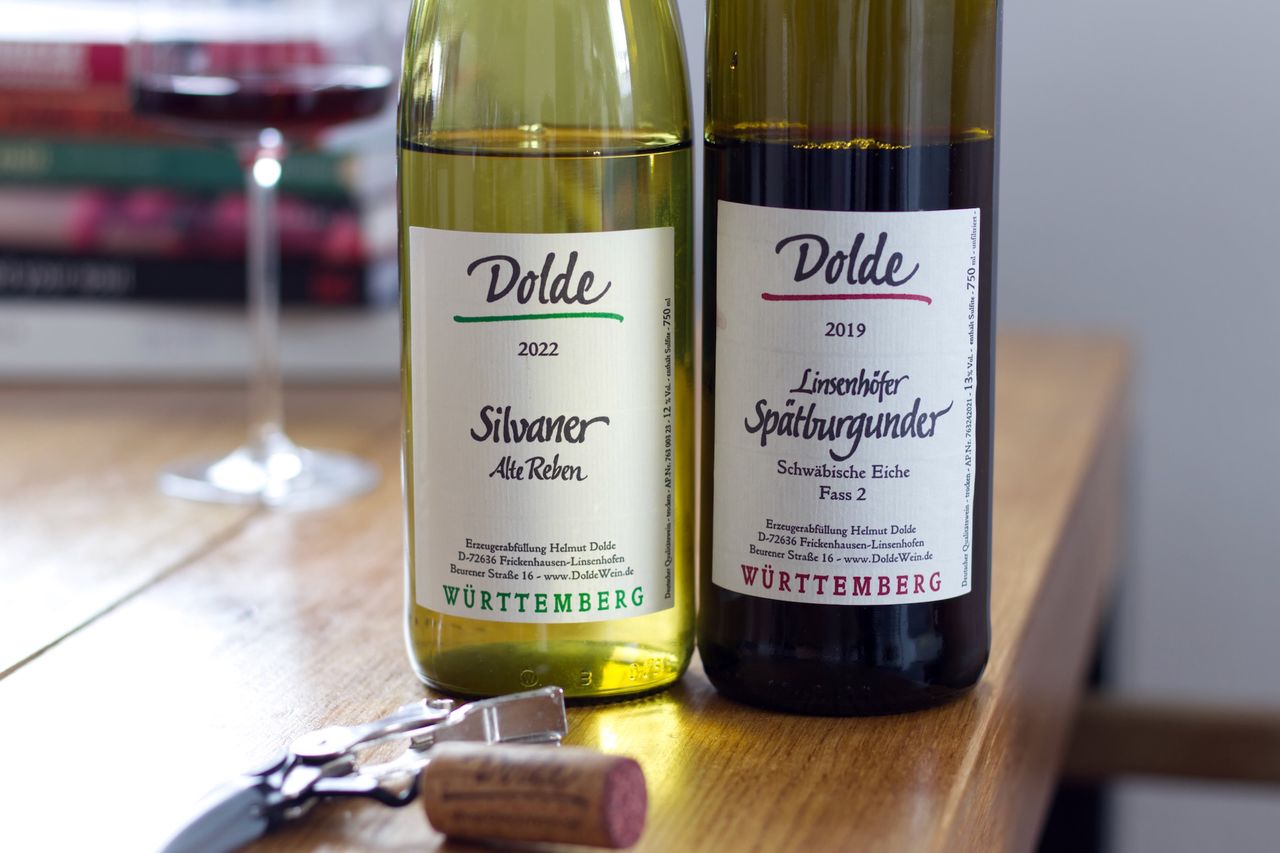Starting the Year with Dolde
For New Year's Eve, the special bottles are brought up from the cellar. This year, they are a Silvaner and a Pinot Noir from the Dolde winery.

Hardly has the Christmas indulgence been digested, and the next event is already on the horizon. Perhaps at no other time of the year are special bottles dug up from the cellar in such quick succession. It’s no different here, although I myself am of the opinion that one should drink what they desire at any time of the year. I fear that for many bottles waiting in cellars for special moments, the expectation for that moment grows with every passing opportunity, preventing them from ever being opened. This fate for a bottle might be worse than ending up as a perpetual trophy. And in the end, today is just as good a day as any other. The question remains though, what makes a bottle special? The two bottles today are neither expensive nor difficult to obtain. Yet, they are special. Just when the old year passes and the new year starts, we open the skylights as we do every year to watch the fireworks, and we will are pleased again that the money we could have set off in fireworks is instead poured down our throats. Simultaneously, fascinated by the fireworks, a little further up the Swabian Alb, behind it all there is a somewhat bright spot shining. To be precise, there are two shining spots, but we skillfully ignore Castle Teck and look further to the right towards Castle Hohenneuffen. And if it weren’t winter right now (and if one had a really strong pair of binoculars), you could watch the grapes of the two wines growing somewhere between here and there.
We have already established last time that we are unusually high above sea level in comparison to German viticulture, that the limestone and volcanic soils are a special feature, and that Helmut Dolde and family do all of this as a side job or now in retirement. Low-tech and cool climate have always been here. Fans and wet towels cool the fermenting must next to the salesroom as needed. The consequence of this is that in the fall, shortly after the harvest, it is particularly nice to shop at the winery when everything is bubbling, and it smells of must and yeast. And the cooler climate, in the era of climate change, changes from being a problem to being an advantage. Let’s try two wines again. A Silvaner Old Vines from 2022 and a Pinot Noir Barrel 2 from 2019, which, as it could not be otherwise, was allowed to mature in oak barrels made from local wood.
The Silvaner pops quietly when uncorked. We forgive that, as it was practically just filled in 2022. In any case, one should not be deceived by the wines and the affordable prices. A week in the open bottle is no problem, and a few years in the cellar is just as fine. Accordingly, the wine still seems unsorted, slightly yeasty, yellow-green herbal, and rather restrained. At least, that’s how it is in the nose; when drinking, it grips, fresh and juicy. From the middle of the tongue, the cheeks are pulled inward, only to lay structure back on the tongue just before disappearing. It’s a lot of fun, and towards the end of the evening, pineapple and mirabelles also appear in the nose.
A night in the refrigerator helps with sorting. The yeast recedes, and the Silvaner becomes somewhat fruitier. I can’t really categorize the fruit properly, but that often happens with Silvaner. It’s a structural wine that really comes into its own when slurping. Perhaps a decanter would have done the trick, but it’s too late for that now. The wine is juicy, full of texture, salty, and endlessly long. I’m glad that something like this grows within sight.
With the Pinot Noir, nothing pops when unscrewed. This has partly to do with the fact that there is nothing to unscrew as the wine is closed with a cork and partly with the fact that the wine had much more time to find its own order. There’s not quite fresh but quite sweet cherry, some smoke, wood, and blackcurrant. A bit of forest fruit cake on chocolate biscuit with spices. What sweetness is present in the nose disappears completely on the palate. The Pinot Noir also has a lot of freshness, juiciness, and tannins that slowly start to gain grip with each sip.
Overnight, slightly balsamic notes develop, but actually, not much changes. The wine seems cool and spicy, fruity and juicy, all together. However, there is a slight change in mouthfeel. The tannin, which sneaked up and then packed quite a punch on the first evening, now only sneaks up. The bite has given way to a charming smoothness, and it suits the wine quite well. The last two glasses, Silvaner and Pinot Noir, accompany salmon-spinach-tomato-cream spaghetti. And that works really well too. For both the wines actually. People who know drink Wuerttemberg. And I really mean that despite the sometimes questionable image the wines from here have. And people who really know even start the new year with them.